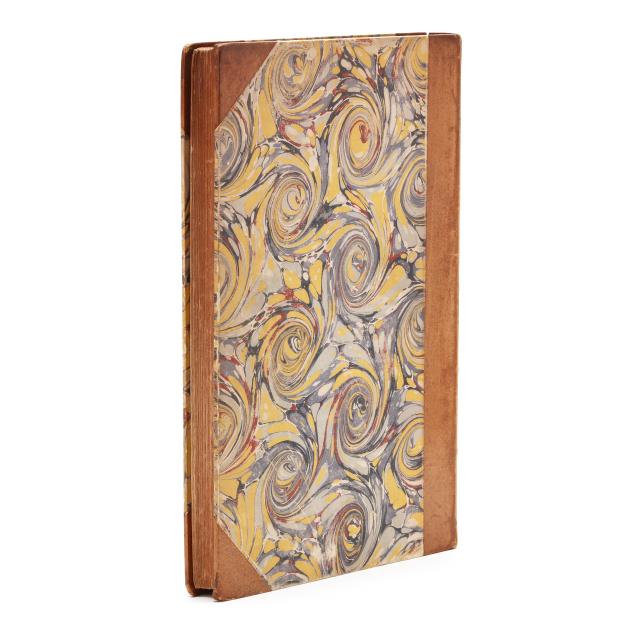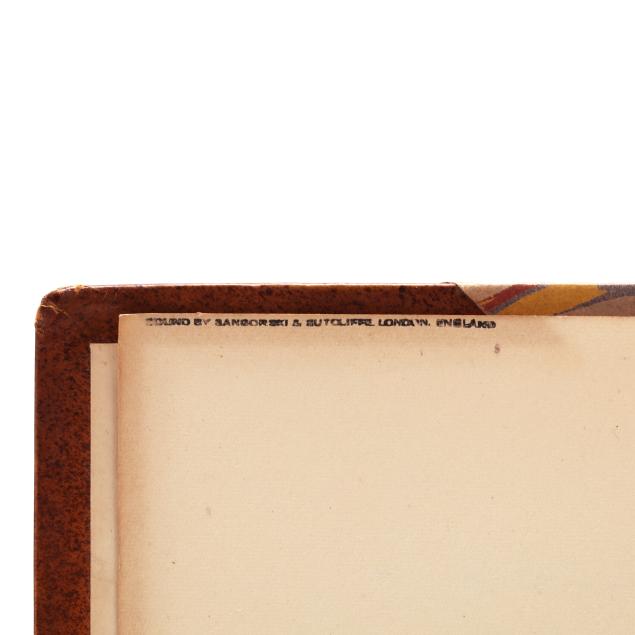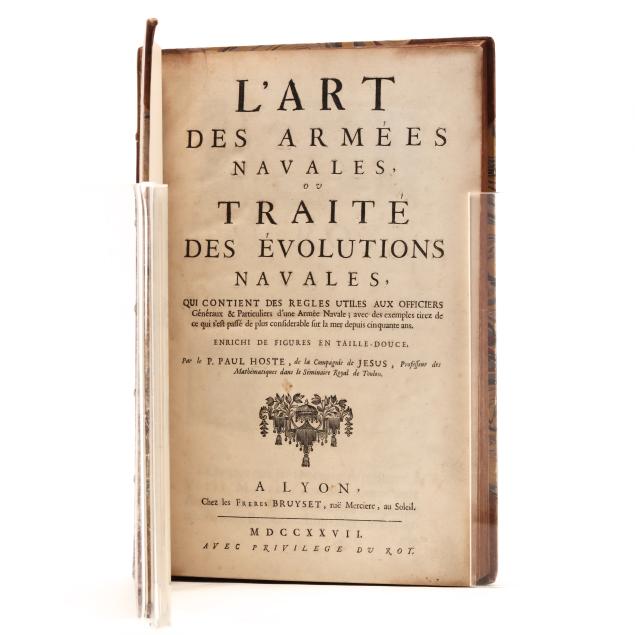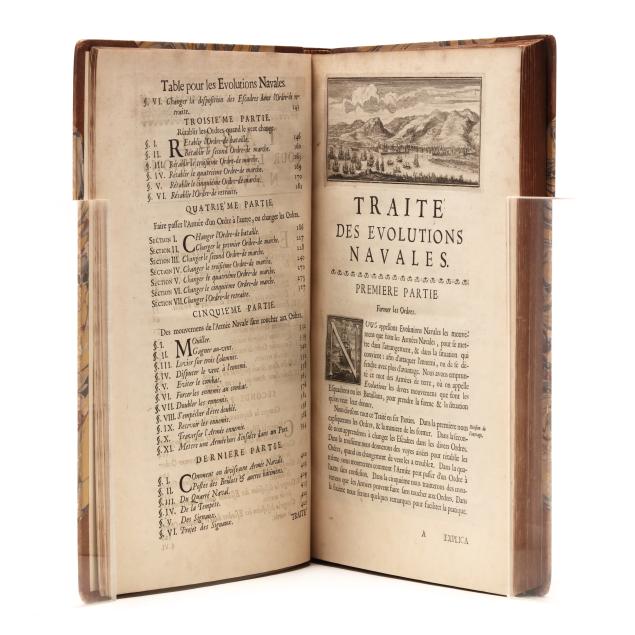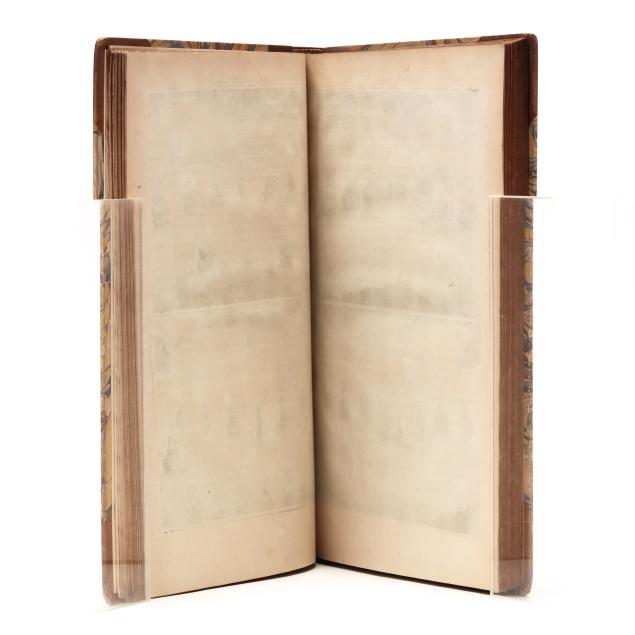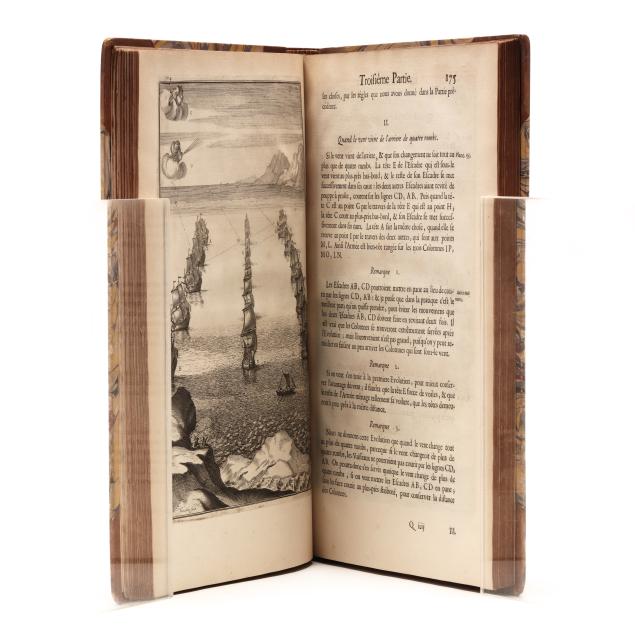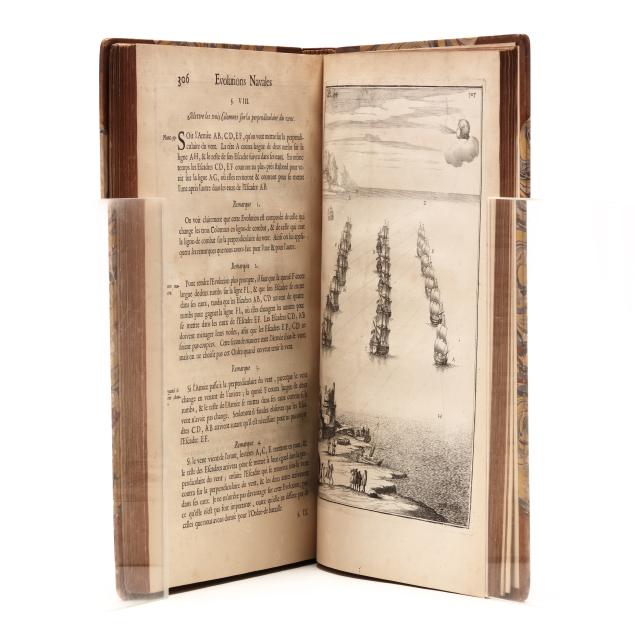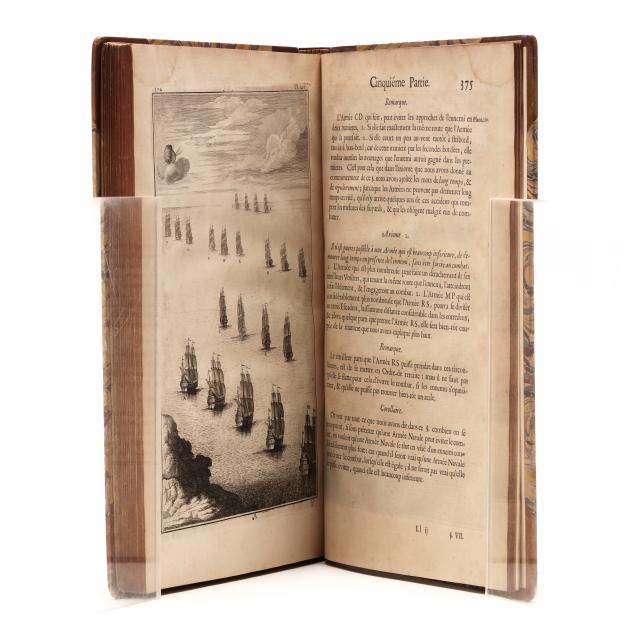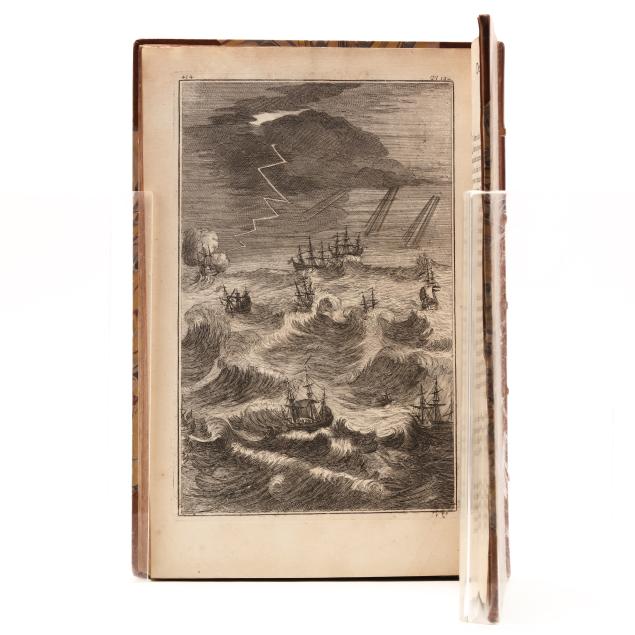
Lot 5089
Paul Hoste's Well-Illustrated Book on Naval Strategy, L'Art des Armées Navales
Explore more items like this one.
Visit our Historical Department Historical
Lot Details & Additional Photographs
14 x 9 5/8 in.
Private North Carolina Collection
Paul Hoste (1652-1700) was an expert on naval strategy with many years of experience at sea, and a mathematics professor in southern France. He wrote "the first major work on naval tactics," the successful L'Art des Armées Navales, ou Traité des Évolutions Navales (The Art of Naval Armies, or Treatise on Naval Evolutions), in 1697. It was republished in 1727 and continued to be influential. In the book, Hoste describes "his five ordres de marche. These retained their primacy in the French service throughout the age of sail." His overall focus was on defense: "Much attention was given to avoiding an engagement. Defense against doubling was treated at greater length than the art of doubling itself, and seen exclusively in terms of the inferior fleet. Above all, his defensive cast of mind is revealed by the continuous acceptance of the leeward station as a basis for tactical demonstration." (Tunstall, Naval Warfare in the Age of Sail, p. 59 and 62)
Sturdy boards with light edgewear and minor scuffing and scratching, corners bumped, joints slightly rubbed with some cracking, minor creasing on spine; interior with small area of cracking at front hinge, endpapers with binding stains at corners, light to moderate toning throughout with spotting to some leaves, with scattered foxing and small areas of damp staining (concentrated in upper corner starting at p. 373), and occasional small area of grime/residue and chip or closed tear at edges; one plate with small, inconspicuous tear; very good condition.

